The week at a glance
- Large falls of common and scarce migrants on the east coast, including Parrot Crossbills and Red-flanked Bluetails
- Sora still on Scilly
- Pallas's Grasshopper Warbler on Scilly
- Grey-cheeked Thrushes on Scilly, Barra and Fair Isle
- Pied Wheatear on Bardsey Island
- Pied-billed Grebe still in County Mayo
- Eastern Olivaceous Warbler still on mainland Shetland
- Buff-bellied Pipit still on Foula
On only three occasions in well over a decade of operating our rare bird news services have we published more than 600 records in a single day — and two of them were this week. Grouse shooters have their "Glorious Twelfth" in August, but we birders save ours till October: 12th October is often reckoned to be the peak day for rare birds in the British Isles. And so it proved this week in spades, with 665 records entered by our hard-pressed news team on Saturday 12th, and a further 616 records processed on Sunday. These daily totals have been exceeded only once, on 2nd January 2011, when New Year fell on a weekend during a massive Waxwing influx and Bird News Extra carried an extraordinary 699 records.
So what happened this weekend? Essentially, a perfect combination of a low-pressure system over the North Sea and rainy conditions onshore dumped huge numbers of migrants on the east coast, particularly from the Humber southwards. And northeasterly winds made for productive seawatching conditions along the same coast further north. In fact, six of the seven most productive counties this week adjoin the North Sea: Norfolk was the most productive by some margin, with East Yorkshire second, Suffolk fourth, Shetland fifth, Kent sixth and Lincolnshire seventh. Only the Isles of Scilly bucked the trend, and even at the height of "Scilly Season" only made it into third place.
For all that, however, it was rather a case of "quantity over quality": new rarities were distinctly thin on the ground, and the only new "mega" to arrive was an elusive Pallas's Grasshopper Warbler reported on Gugh (Scilly) on 16th. Perhaps the most notable new arrivals were Parrot Crossbills. The first reported, and the most photographed, were a group of four — two males and two females — at Gunners Park, Shoeburyness (Essex) from 12th to 14th. On 13th a male was briefly at Stiffkey (Norfolk) and five possibles flew over the Warren, Spurn (East Yorks). The next day one was at Winterton-on-Sea and on 15th a party of four were seen in Wells Woods (both Norfolk). Other popular rarities included four Red-flanked Bluetails, at Happisburgh and Warham Greens (Norfolk), Sizewell (Suffolk) and Crail (Fife), and Grey-cheeked Thrushes on St Mary's (Scilly), Barra (Outer Hebrides) and Fair Isle (Shetland). A Pied Wheatear on Bardsey Island (Gwynedd) might have attracted more admirers had it not succumbed to a Sparrowhawk on 13th.

Parrot Crossbill, Gunners Park, Essex (Photo: Bill Plumb)
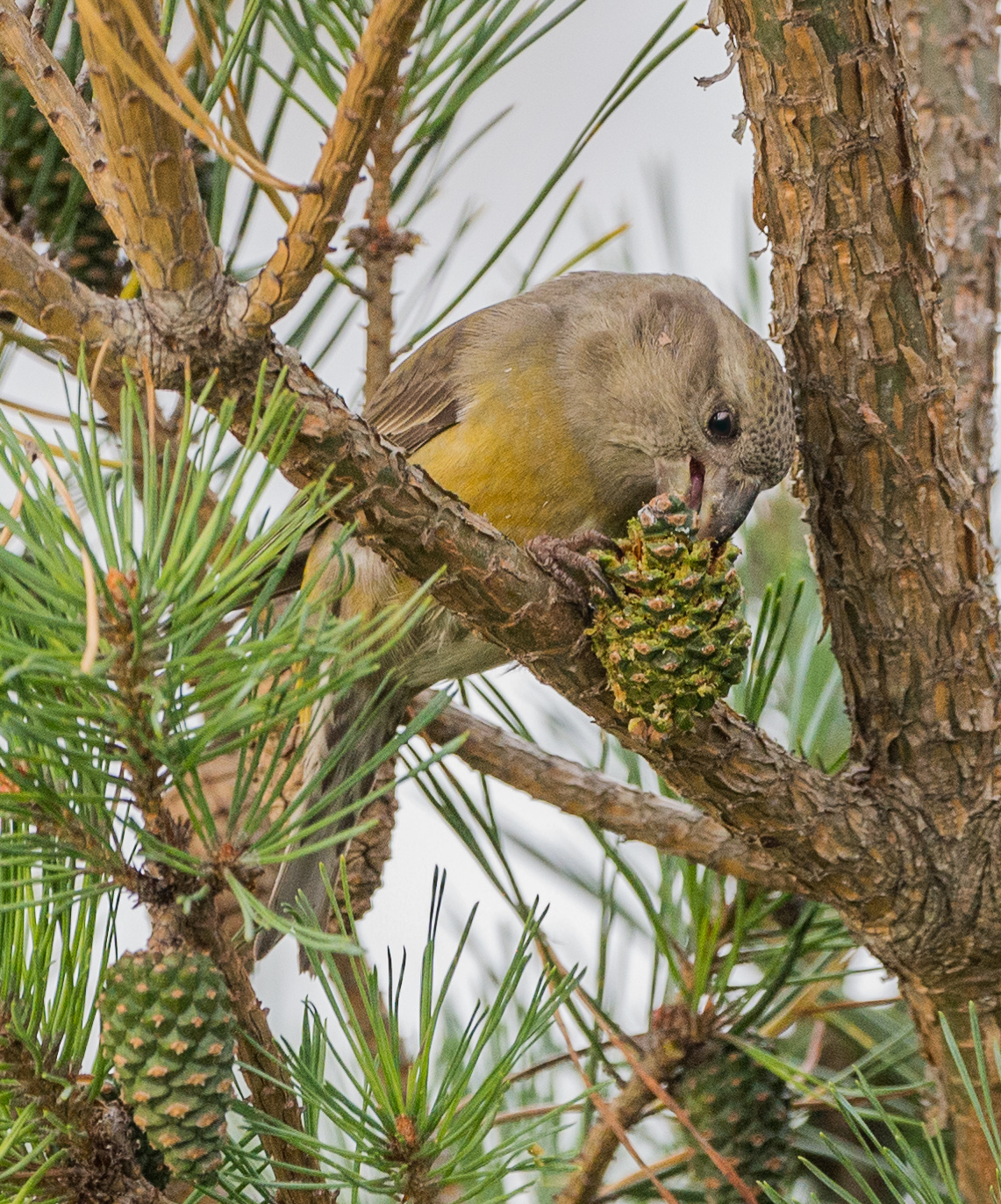
Parrot Crossbill, Gunners Park, Essex (Photo: John Stanton)

Red-flanked Bluetail, Happisburgh, Norfolk (Photo: Rob Wilson)
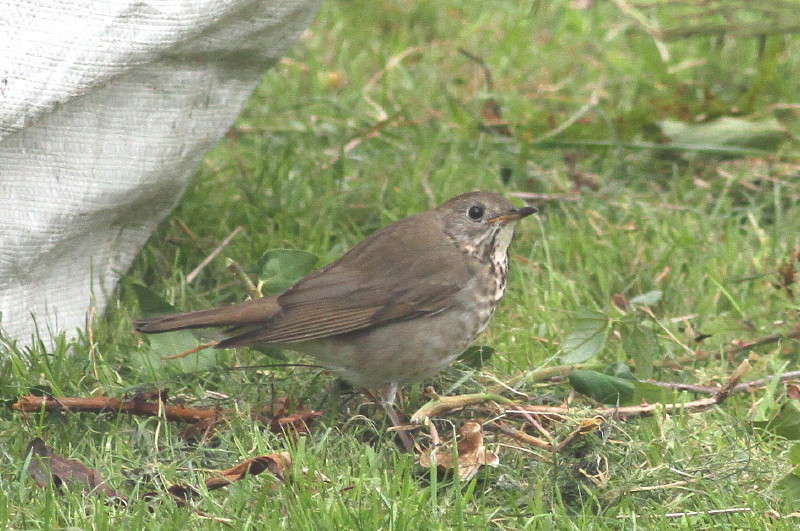
Gray-cheeked Thrush, St. Mary's, Isles of Scilly (Photo: Rob Stonehouse)

Pied Wheatear, Bardsey Island, Gwynedd (Photo: Ben Porter)
Of last week's lingering megas, the Pied-billed Grebe was again reported from Sruhillbeg Lough on Achill Island (Mayo) on 10th, the Eastern Olivaceous Warbler was at Hoswick (Shetland) until 11th, the Sora was still on the Great Pool (Tresco) at the time of writing, and the Buff-bellied Pipit was on Foula until 15th at least. The Isabelline Wheatear at Martin's Haven (Pembrokeshire) just sneaks into this week's review as it was last seen on the afternoon of 10th but not the following morning or since.
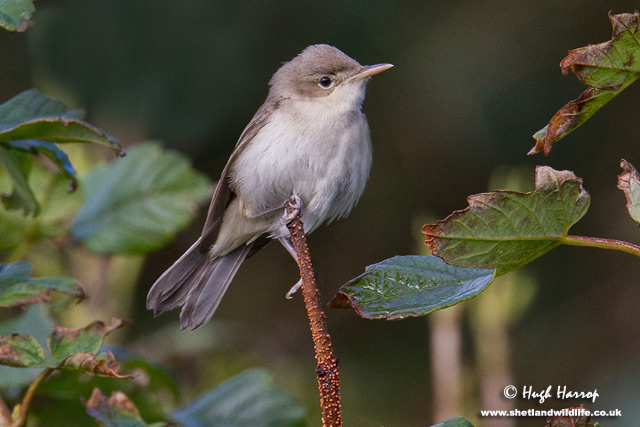
Eastern Olivaceous Warbler, Hoswick, Mainland, Shetland (Photo: Hugh Harrop)
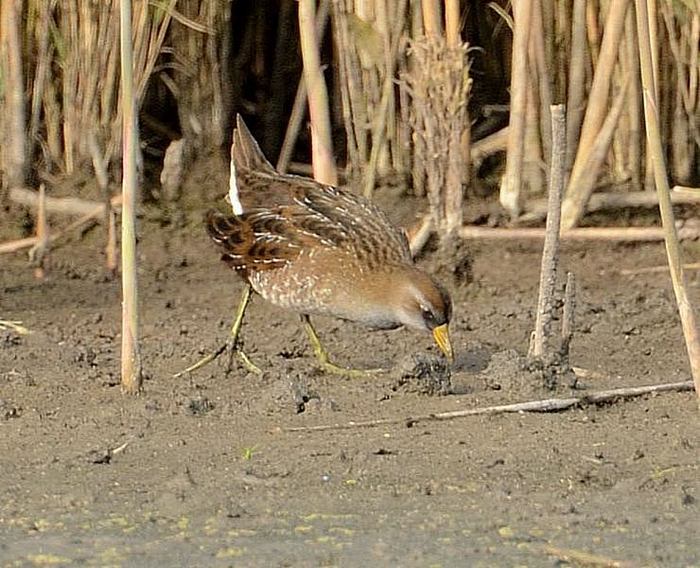
Sora, Tresco, Isles of Scilly (Photo: Dave Perrett)
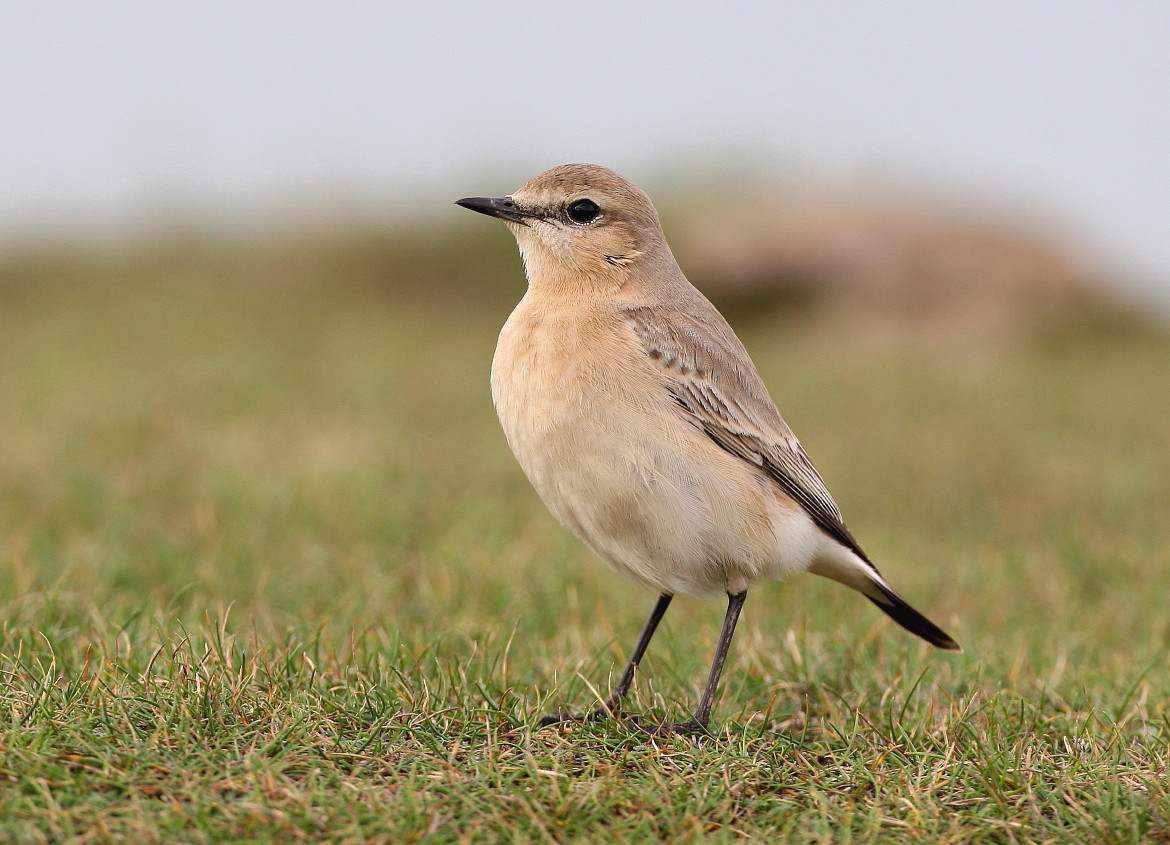
Isabelline Wheatear, Martin's Haven, Pembrokeshire (Photo: Stevehinton)
The first rare wildfowl of the winter continued to trickle in. A Cackling Canada Goose was at Malin Head (Donegal) on 13th and the Richardson's was still at Loch Gruinart (Islay) to 16th at least; both birds were associated with winter flocks of Barnacle Geese. Black Brants were in Dorset, Kent and East Yorkshire.
The drake American Wigeon was again at Udale Bay on 10th and new (or returning) birds took up residence at North Loch, Sanday (Orkney) on 10th and The Gearagh (Cork) on 13th. The Black Duck on Achill Island (Mayo) was still present, as were the single Blue-winged Teal on Frankfield Loch (Clyde) and the threesome on Boultham Mere (Lincs). The drake Green-winged Teal remained on Martin Mere (Lancs) to 14th at least, and a new bird turned up at Titchwell (Norfolk) on 10th and stayed until 12th. Male and female Ring-necked Ducks were on Eyebrook Reservoir on 12th and 13th, and the female was perhaps the bird that turned up on nearby Rutland Water on 15th. Others were at Slapton Ley (Devon), Meikle Loch (Aberdeenshire), Mullet (Mayo), Loch Leodasay (N. Uist) and Dernesh Lake (Donegal) during the week. The drake Lesser Scaup remained at Cardiff Bay (Glamorgan) and Pennington Flash (Gtr Manchester), the latter joined by a Greater Scaup to give a good opportunity to study the differences between these closely related Aythya ducks. The only sea-duck of note was a "Northern" Eider (subsp. borealis) off Malin Head (Donegal) on 12th.
Just two of the exceptional 70+ reports of Leach's Storm-Petrel this week came from western coasts, both in Wales; the rest were spread along the east coast from the Farnes (Northumberland) to Margate (Kent). One of these east-coast birds, presumably, was blown inland and spent 13th in the unfamiliar surroundings of Rutland Water.

Leach's Storm-petrel, Rutland Water, Leicestershire and Rutland (Photo: Dave Kelsall)
Also producing plenty of reports was Glossy Ibis, with the bulk of the birds confined to England (Cumbria, Dorset, Essex, Hampshire, Isle of Wight, Kent, Lancashire, Greater Manchester, Northamptonshire, Shropshire, Somerset, Staffordshire); Welsh birds lingered at the National Wetlands Centre (Carmarthenshire; up to four still), on the Malltraeth Estuary (Anglesey) and at Goldcliff Pools (Gwent), and the sole Irish record was an unconfirmed report of a bird in the Tagoat (Wexford) area for the last three weeks. There must be something about the Lost Gardens of Heligan (Cornwall) that appeals to small herons; the site is best remembered for the Green Heron of autumn 2010, but this week a juvenile Night Heron was photographed there on 12th. The Cattle Egret at Harty Ferry (Kent) was still around at the time of writing, and Purple Herons were at Horsey (Norfolk) to 15th, on Fair Isle on 16th and on St Mary's (Scilly) to 16th at least. Great White Egrets were reported from 20 or so sites, the only birds outside England being one at Blanket Nook, Lough Swilly (Donegal) and another beside the River Wye at Llowes (Powys), both on 10th. A White Stork of unknown origin was seen being mobbed by corvids near Aldingbourne (West Sussex) on the same day.
Honey Buzzards are on the move: flyovers were reported this week from Steps Hill (Bucks), Sandwich Bay (Kent) and Rainham Marshes (London). The only Black Kite of the week was one over the ARC Pit at Dungeness (Kent) on 10th. A juvenile male Northern Harrier was at Tacumshin (Wexford) on 15th and 16th and a possible Pallid Harrier was reported from Abberton Reservoir (Essex) on the morning of 12th. Rough-legged Buzzard reports started arriving in earnest, with reports from two sites in Kent on 12th, one in Norfolk and one in Cornwall on 14th, and three in Suffolk on 15th. A male Red-footed Falcon at Bawdsey (Suffolk) on 12th was reported from nearby Shingle Street later the same afternoon.
The Corncrake at South Milton Ley (Devon) was again present on 14th; the only other reported this week was one flushed on St Mary's (Scilly) the previous day. Spotted Crakes were on St Mary's (Scilly), the Oare Marshes (Kent) and at Gibraltar Point (Lincs). Wandering Common Cranes were at Slimbridge (Glos) all week, and over Aylesbury (Bucks) and Chew Valley Lake (Somerset) on 10th.
The Black-winged Stilt stayed around the Hayle Estuary (Cornwall) till 10th, and possibly the 11th, but has not been reported since; a possible Semipalmated Sandpiper was reported from Copperhouse Creek on 12th. Five American Golden Plovers were widely spread along western coasts, with individuals in Cornwall, Galway, Mayo, Londonderry and the Outer Hebrides. The Long-billed Dowitcher hung around on Rhaslas Pond (Glamorgan) to 14th, while the bird at Keyhaven (Hants) was still around to 15th at least. Similarly, the Lesser Yellowlegs in Kent and Carmarthenshire lingered to 12th and 14th respectively. White-rumped Sandpipers were at Salthouse/Cley (Norfolk) on 10th and 11th, Grutness and the Pool of Virkie (Shetland) on 11th, Donna Nook (Lincs) and Leam Lough (Mayo) on 14th, and on the Bann Estuary (Londonderry) on 15th. The Baird's Sandpipers at Slimbridge (Glos) and Ballycotton (Cork) were last reported on 10th, but the bird on Black Rock Strand (Kerry) lingered to 14th. A popular Pectoral Sandpiper showed well on the North Arm of Rutland Water until 15th, with other birds in Cambridgeshire, Devon, Essex, Lincolnshire, the Outer Hebrides, Shetland and Wexford. The only Buff-breasted Sandpiper of the week was a bird on Fair Isle on 10th.

White-rumped Sandpiper, Gibraltar Point NNR, Lincolnshire (Photo: Paul Neale)

Pectoral Sandpiper, Rutland Water, Leicestershire and Rutland (Photo: Bob Pacey)
A Wilson's Phalarope turned up on the marsh at the head of Sand Voe (Shetland) on 10th and stayed until 15th. Several Grey Phalaropes were blown inland, including birds at Covenham Reservoir (Lincs) from 10th to 14th, Belvide Reservoir (Staffs) on 11th, Rutland Water on 13th, Old Moor and Edderthorpe Flash (S Yorks) on 12th and 13th, and Nosterfield Quarry (N Yorks) on 14th.

Wilson's Phalarope, Sand, Mainland, Shetland (Photo: James Wood)
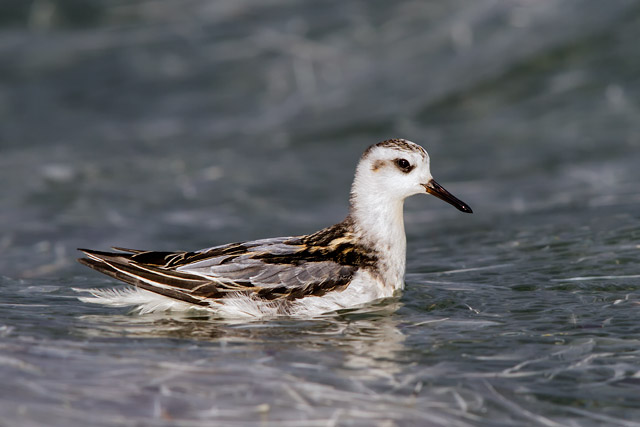
Grey Phalarope, Covenham Reservoir, Lincolnshire (Photo: Nick Clayton)
In keeping with the story of the week, most of the 16 sightings of Sabine's Gull were along the east coast, ranging from St Abb's Head (Borders) to Canvey Island (Essex), but there were also sightings at Pendeen (Cornwall), Strumble Head (Pembrokeshire) and Cuskinny Marsh (Cork). An adult Bonaparte's Gull was again to be found along the beach at Teignmouth (Devon) from 13th, after an absence of some three weeks. The long-staying Laughing Gull was still on Sanday (Orkney), as were the Ring-billed Gull at Portrush (Antrim) and the Forster's Tern on the Rogerstown Estuary (Dublin). Small numbers of Long-tailed and Pomarine Skuas were reported along the east coast, from Tynemouth to Sheppey.
Turning to landbirds, two Hoopoes graced the pages of Bird News Extra: one was at Chidham Point (W Sussex) on 12th and another was on Brownsman (Farne Is.) on 15th. The flood of Wrynecks has now all but dried up: there were birds at Porthgwarra (Cornwall), Prawle Point (Devon), Old Basing (Hants), Pitlochry (Perth/Kinross) and up to four were on Scilly. The same applies to Red-backed Shrike, with just a handful of records from Scilly, Lincolnshire, Louth and Shetland. Two Isabelline Shrikes turned up, though: on Foula from 10th–12th and at Flamborough Head (of the race L. i. isabellinus, "Daurian" Shrike) on 15th and 16th. Great Grey Shrike was another species that contributed significantly to the flood of reports from the east coast: over 100 records were received, mostly from east-coast sites between Holy Island and the Isle of Thanet, but with inland records from the New Forest (Hants), Black Down (Somerset), Bough Beech Reservoir (Kent) and Sandy (Beds). Four Short-toed Larks featured this week, all long-stayers: on St Agnes (Scilly), at Ballycotton (Cork), on Foula (Shetland) and on the Isle of Portland (Dorset).

Daurian Shrike, Flamborough Head, East Yorkshire (Photo: Jaz)
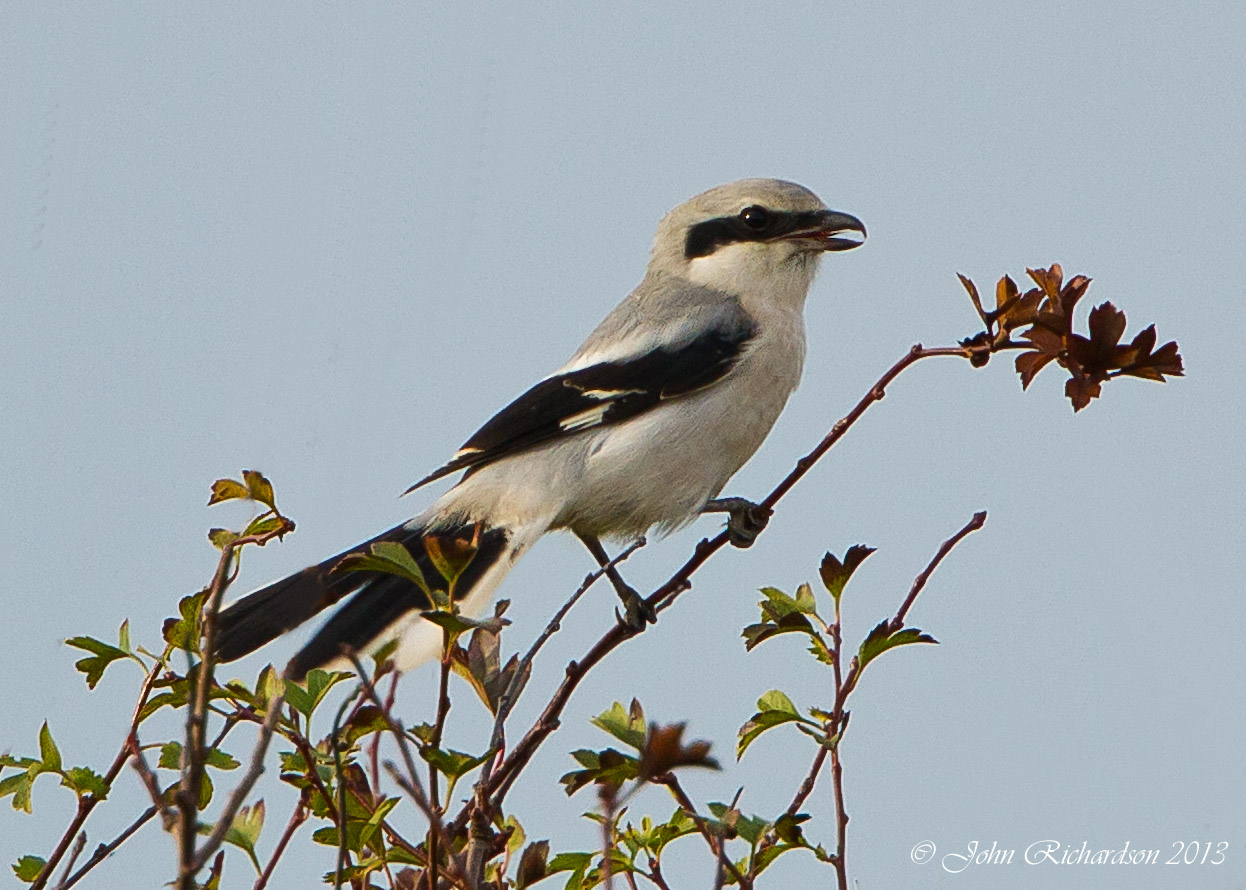
Great Grey Shrike, Shingle Street, Suffolk (Photo: John Richardson)

Short-toed Lark, Ballycotton, Cork (Photo: Ronan McLaughlin)
If Norfolk was the most productive county, Yellow-browed Warbler was by far the most frequently reported species, making up more than 10% of the nearly 3000 reports we published this week. Most were, predictably enough, along the east coast but there were plenty on southern and western coasts and, as last week, a small number filtered inland: at Sutton Bingham Reservoir (Somerset), Andover and Old Basing (Hants), Eyebrook Reservoir (Leics), Whisby Nature Park (Leics) and Castle Loch near Lockerbie (Dumfries & Galloway). A popular Western Bonelli's Warbler exercised the photographers at Hartlepool Headland (Cleveland) from 13th, and others were on Burray (Orkney) from 11th and Whalsay (Shetland) from 12th. Ten or so Dusky Warblers came mainly from a cluster of sites along the east coast between north Norfolk and Filey, with outliers at Sandy Point (Hants) and on Fair Isle. Radde's Warblers showed a similar distribution but were less tightly concentrated, with coastal reports from East Sussex, Suffolk, Lincolnshire and East Yorkshire and a surprising inland bird at Anton Lakes NR (Hants) from 13th to 15th. Pallas's Warblers showed a similar pattern to the two previous species, but were exclusively restricted to east-coast sites between Kent and Fife, again clustered between Norfolk and North Yorkshire. Last week's Arctic Warbler on St Mary's (Scilly) seems to have departed on 10th, but others were at Loch of Voe and on Fair Isle (Shetland) on 13th and 15th respectively.
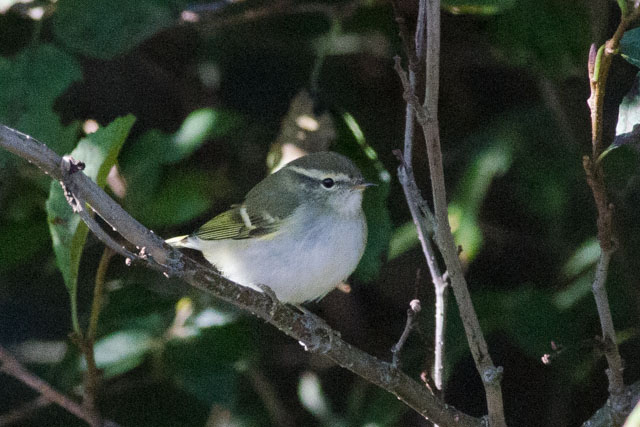
Yellow-browed Warbler, Baglan Bay, Glamorgan (Photo: Mark Hipkin)

Western Bonelli's Warbler, Hartlepool Headland, Cleveland (Photo: Frank Golding)

Dusky Warbler, Filey, North Yorkshire (Photo: Mark Pearson)

Radde's Warbler, Buckton, East Yorkshire (Photo: Lee Johnson)

Pallas's Warbler, Flamborough Head, East Yorkshire (Photo: Jaz)
A Paddyfield Warbler was found and photographed on Unst (Shetland) on 12th, but was nowhere to be found the following morning. Blyth's Reed Warblers were all in the Northern Isles: on Unst, Fair Isle and Mainland (Shetland) and on North Ronaldsay (Orkney). There were just two Marsh Warbler reports, from opposite ends of the country: on Unst (Shetland) on 11th and on Tresco (Scilly) on 12th.

Paddyfield Warbler, Skaw, Unst, Shetland (Photo: Brydon Thomason)
The only Icterine Warbler of the week lingered for the afternoon of 11th at Donna Nook (Lincs) and there were no reports of Melodious Warbler. Six Barred Warblers were at Salthouse and Hunstanton (Norfolk), Spurn and Kilnsea (E Yorks), Skateraw (Lothian) and Swinister (Shetland), and the Sardinian Warbler remained at Mire Loch (Borders) to 15th at least.
Rose-coloured Starlings bucked the eastern trend, with all but one record coming from western counties (Devon, Cornwall, Scilly, Tyrone, Donegal and the Outer Hebrides); the only east-coast bird was the long-staying juvenile still present at Caister (Norfolk) on 16th. The bird or birds in the Penzance/Marazion area showed a catholic taste in supermarkets, with reports variously from Morrisons, Sainsbury's and Tesco. Six Bluethroats ranged up the east coast, from south to north at Holme (Norfolk), Flamborough Head and Filey (N Yorks), Whitburn Coastal Park (Durham), Isle of May (Fife) and North Ronaldsay (Orkney), but the only west-coast bird and the only long-stayer was the bird on St Mary's (Scilly) which was still present on 11th. Last week's Thrush Nightingale was retrapped on Portland on the same day. Siberian Stonechats were reported from Bressay (Shetland), Old Hall Marshes (Essex; possible), Scalby Beck (N Yorks) and Wells-next-the-Sea (Norfolk).

Rose-coloured Starling, Marazion, Cornwall (Photo: John Rowe)

Siberian Stonechat, Wells-next-the-Sea, Norfolk (Photo: John Stanton)
More than 50 reports of Red-breasted Flycatcher originated from around 30 widely scattered sites, but with the expected easterly bias. Rather less predictable was a Black-bellied Dipper, the first of the winter, that popped up near the isolated bay of Wood Wick on Unst.

Red-breasted Flycatcher, St. Mary's, Isles of Scilly (Photo: Steven Fryer)

Black-bellied Dipper, Unst, Shetland (Photo: Brydon Thomason)
It was a good week for Richard's Pipits, with over 30 reports, including inland reports from Sandy (Beds), Holme Pierrepont and Newstead & Annesley CP (Notts) and Oxenhope (W Yorks). A reported Blyth's Pipit in Kent was later considered to be this species too. A Tawny Pipit was reported from Porthgwarra (Cornwall) on 12th. Eight Olive-backed Pipits followed the well-established pattern: records came from a string of sites up the North Sea coast from Holland Haven (Suffolk) in the south to Fair Isle (Shetland) in the north. The only Pechora Pipit was at Toab (Shetland) from 10th to 12th. Just five Red-throated Pipits were reported, all singletons, from St Mary's (Scilly), Spurn and Flamborough (East Yorkshire), Fair Isle (Shetland) and Mizen Head (Cork).

Olive-backed Pipit, Holland Haven CP, Essex (Photo: Paul Rowe)

Pechora Pipit, Toab, Mainland, Shetland (Photo: Dougie Preston)
The only Serin of the week was around Christchurch Harbour (Dorset) on 12th. Arctic Redpolls of unspecified race were reported from Sandside Bay (Orkney) and South Gare (Cleveland); Coues' Arctic Redpolls appeared at Foreness Point (Kent), at Winterton Dunes and a cluster of sites between Blakeney and Wells (Norfolk) and at Saltfleetby (Lincs); Hornemann's reports showed a much more northerly distribution, being submitted from Port Nis and Eoropie (Lewis), three sites on mainland Shetland and one on Yell, and from mainland Orkney. Common Rosefinches were scattered widely but thinly, with singles on Unst and Foula (Shetland), one on Dursey Island (Cork), two birds in Cornwall (at Porth Joke and Nanquidno) and one in a garden at St Clement (Jersey). The flock of Two-barred Crossbills in South Yorkshire seems to have disappeared, but birds were reported from four sites in the south-east: Hemsted Forest and Margate (Kent), Leith Hill (Surrey) and Lynford Arboretum (Norfolk).

Hornemann's Arctic Redpoll, Mid Yell, Yell, Shetland (Photo: Dougie preston)

Two-barred Crossbill, Lynford Arboretum, Norfolk (Photo: Andy Thompson)
The only Ortolan of the week was at Pegwell Bay (Kent) on 11th. A cluster of Little Bunting sightings were received from sites around Holderness (East Yorks) with others from Durham, Northumberland, Shetland, Norfolk and Scilly. A Rustic Bunting was at Flamborough Head from 11th to 15th and another was at Warham Greens (Norfolk) on 11th.
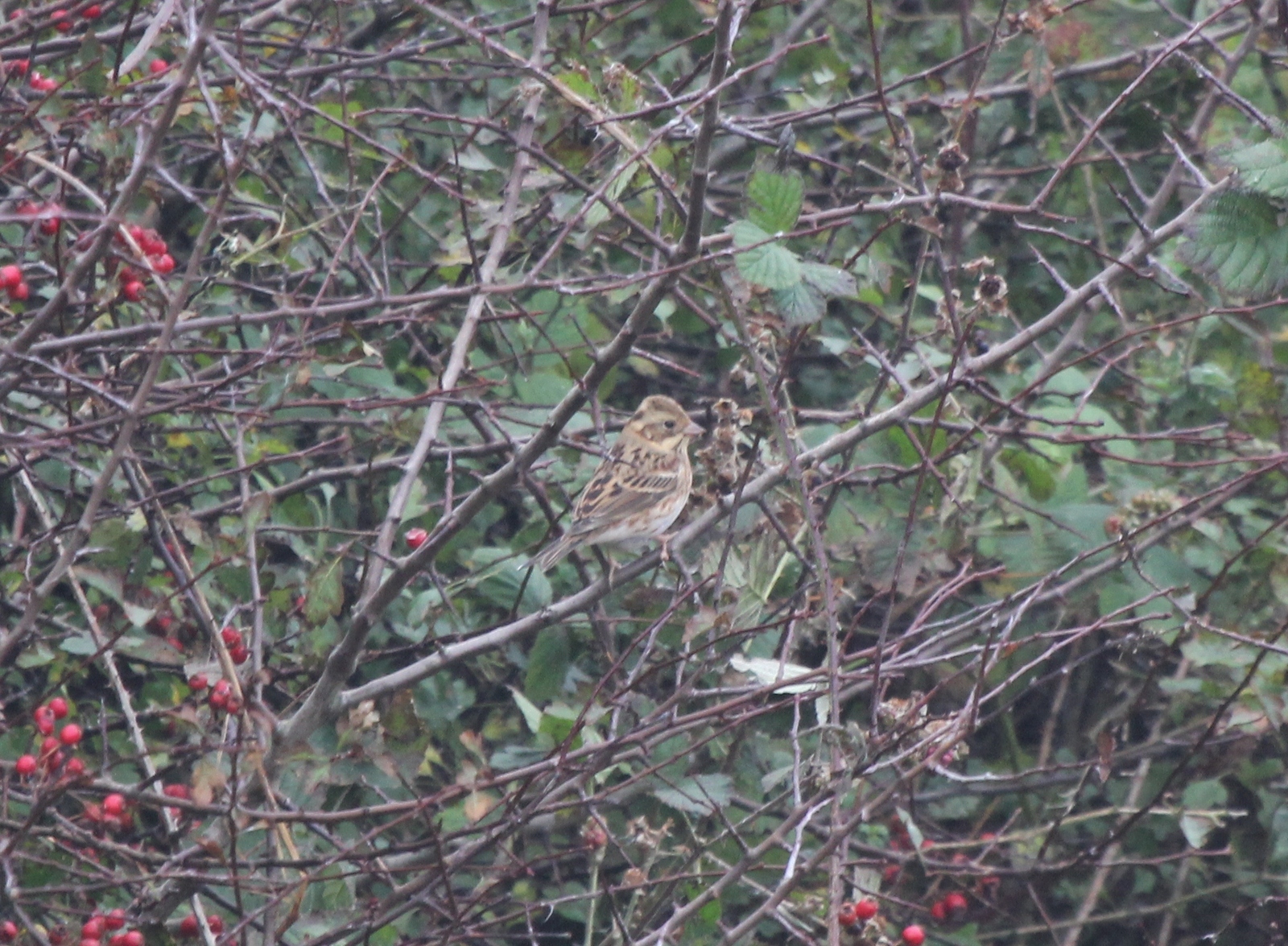
Rustic Bunting, Flamborough Head, East Yorkshire (Photo: David Aitken)
Photo of the Week

Yellow-browed Warbler, Bardsey Island, Gwynedd (Photo: Ben Porter)
Over the last couple of weeks, the UK has seen an 'invasion' of Yellow-browed Warblers, a scarce visitor from the East that's little bigger than a Goldcrest in size. For bird photographers, locating one of these diminutive leaf warblers is not even half the battle because they spend almost all their time flitting about feeding amongst the foliage. Getting an unobscured view can be extremely challenging and very quick reactions are needed to get the shot if the bird does suddenly come out into the open. From his Bardsey Island base, young Ben Porter managed just that feat this week with a frame-filling portrait of one of these warblers posed beautifully on a branch against a diffuse leafy background. With puffed-up plumage and its head cocked to look directly at the camera/viewer, this bird couldn't look more cute. Ben's choice of a square crop with the bird's eye at a Rule of Thirds intersection is the ideal composition. A scarcity shot to be proud of.

Wilson's Warbler, United States (Photo: Tom Ingram)
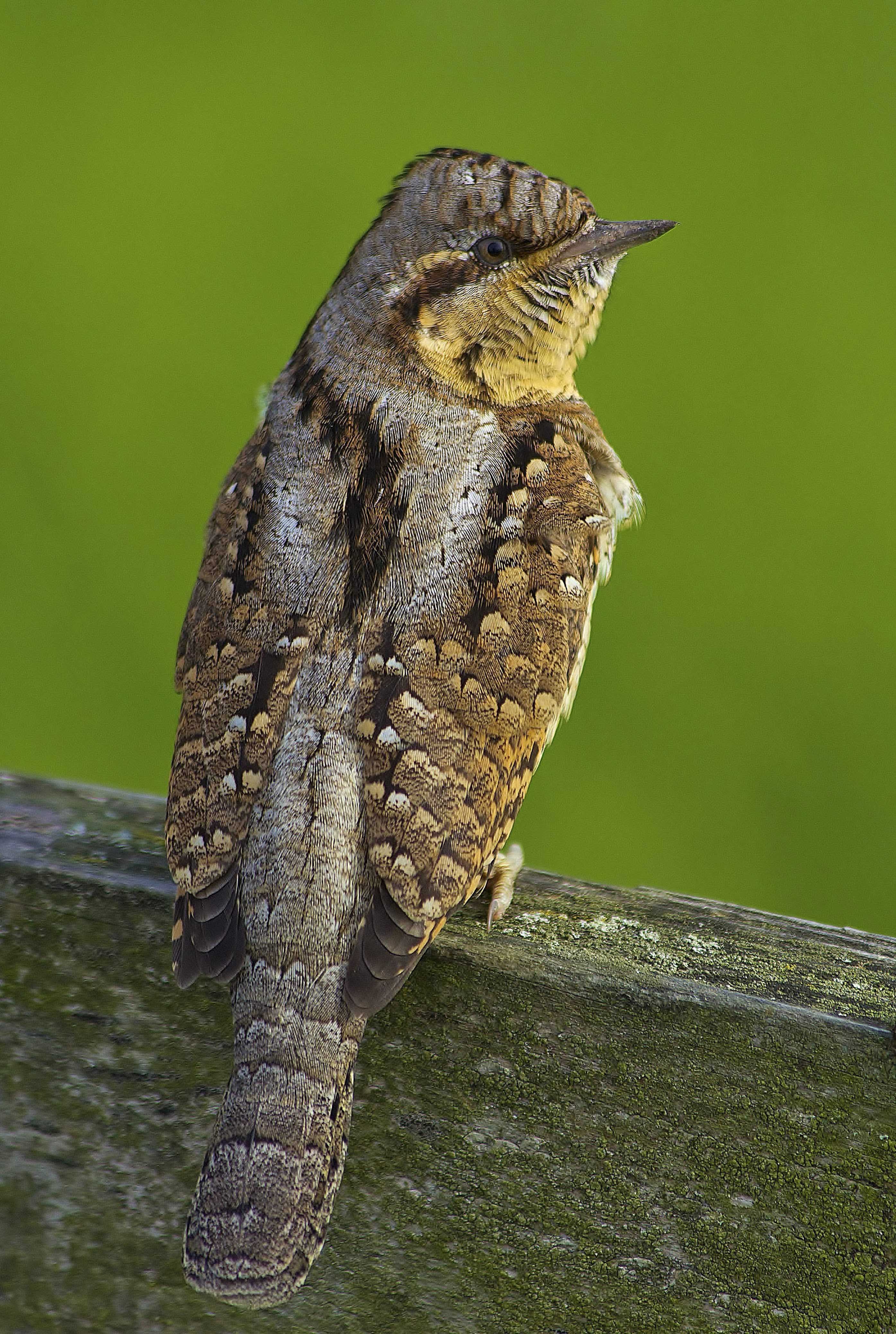
Wryneck, Berkeley, Gloucestershire (Photo: Mr Clive Daelman)
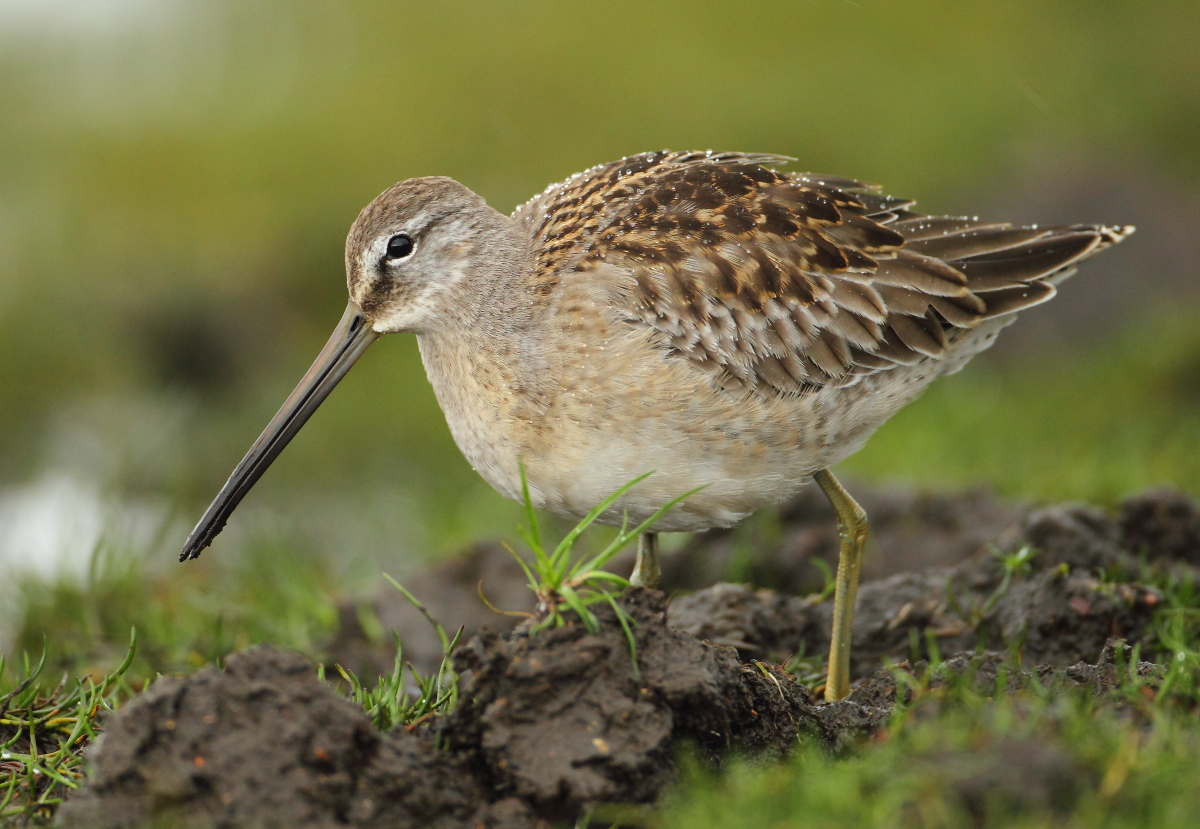
Long-billed Dowitcher, Rhaslas Pond, Glamorgan (Photo: Chris Cook)

Red Kite, Harewood, West Yorkshire (Photo: Ivan Ellison)
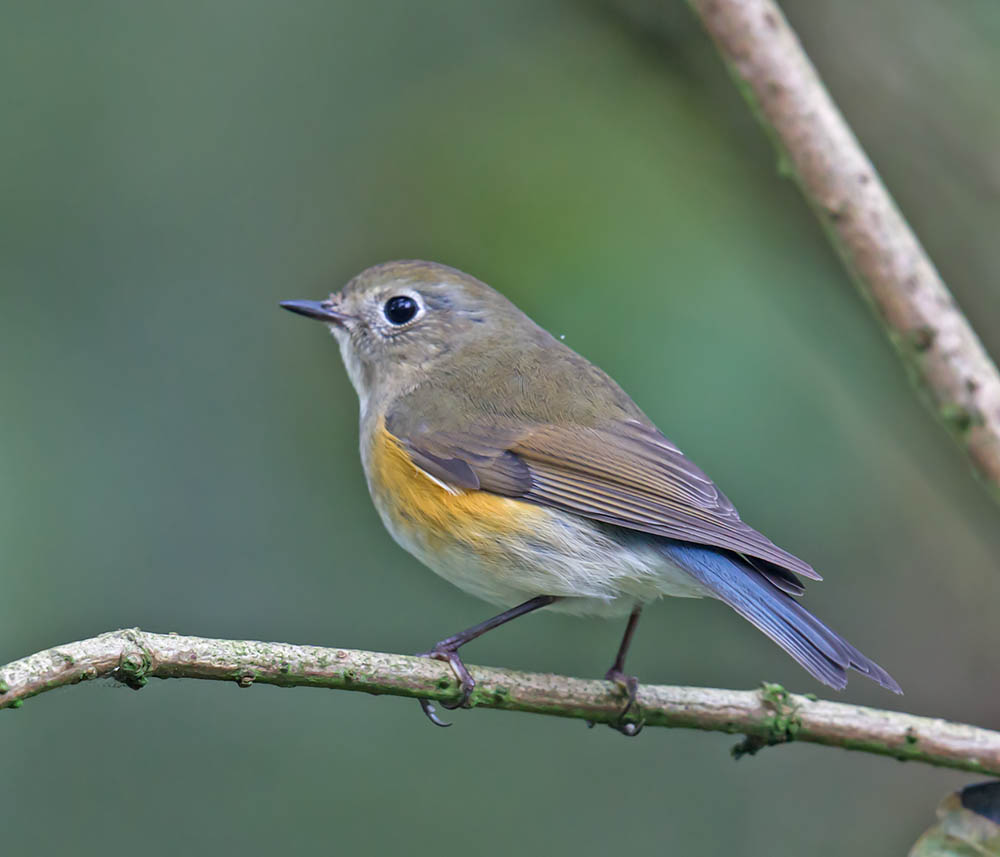
Red-flanked Bluetail, Crail, Fife (Photo: John Anderson)
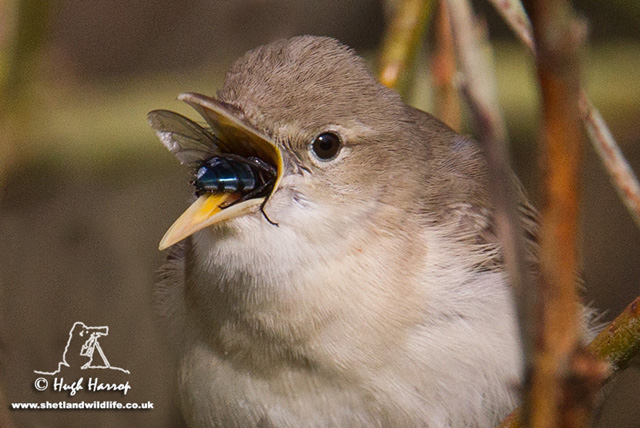
Eastern Olivaceous Warbler, Hoswick, Mainland, Shetland (Photo: Hugh Harrop)
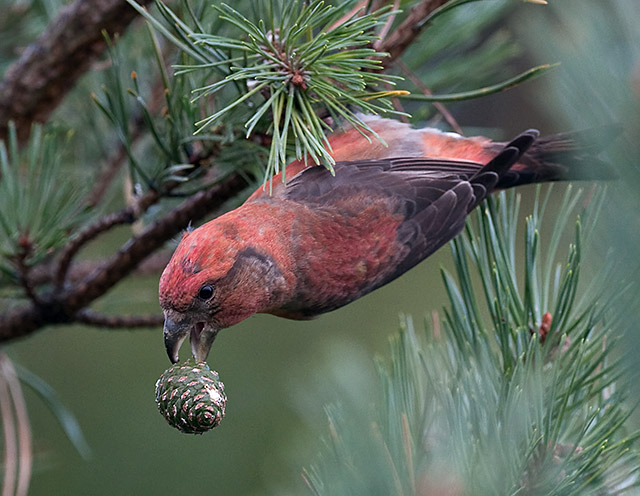
Parrot Crossbill, Gunners Park, Essex (Photo: Steve Hiscock)
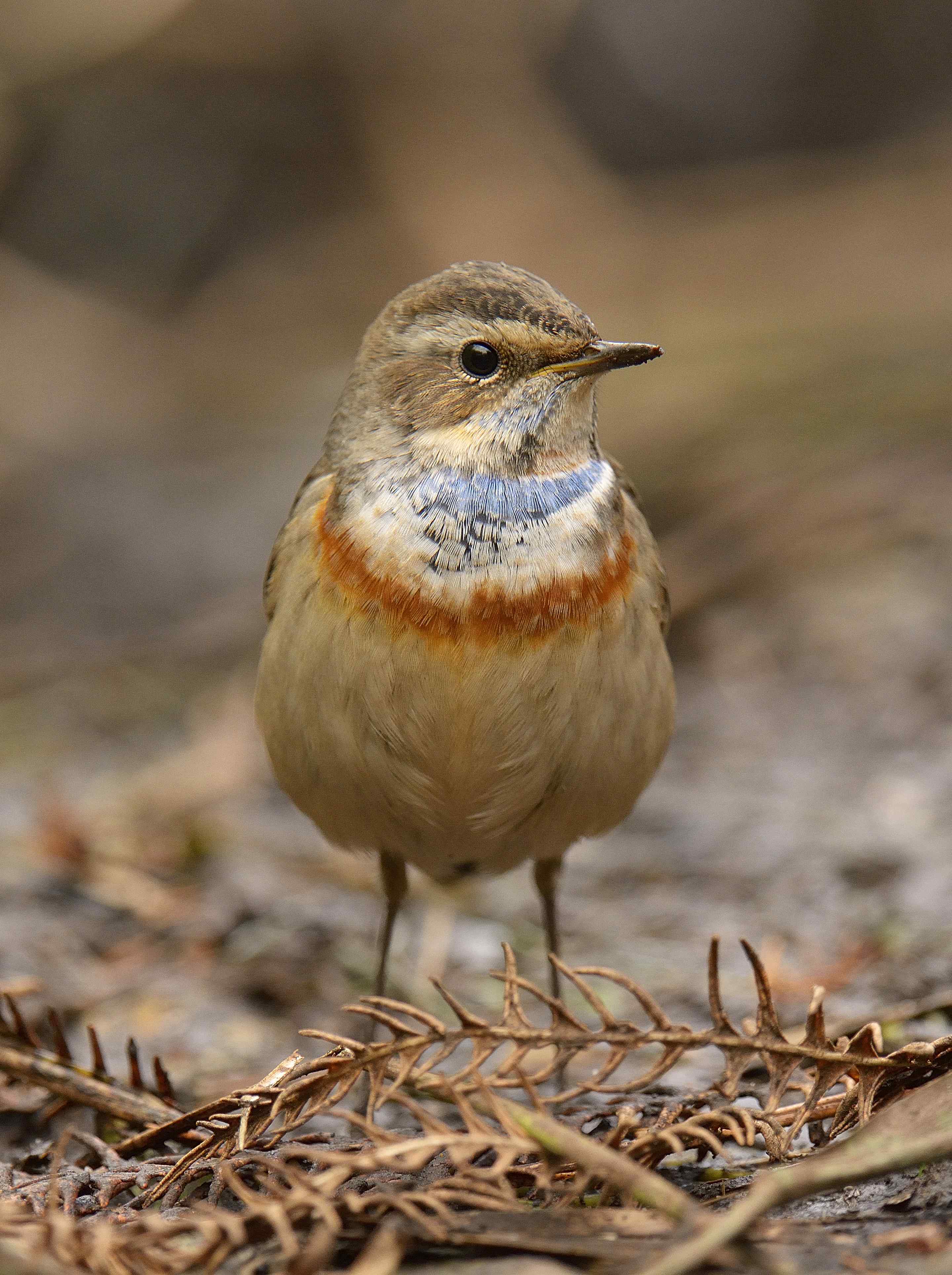
Red-spotted Bluethroat, St. Mary's, Isles of Scilly (Photo: Mick Colquhoun)

Great Grey Shrike, Spurn YWT, East Yorkshire (Photo: Jamie MacArthur)

Kestrel, Reculver, Kent (Photo: Steve Ashton)

Glossy Ibis, Stokesay, Shropshire (Photo: Chris Sandys)

Long-eared Owl, Cley Marshes NWT, Norfolk (Photo: Keith Bilverstone)

